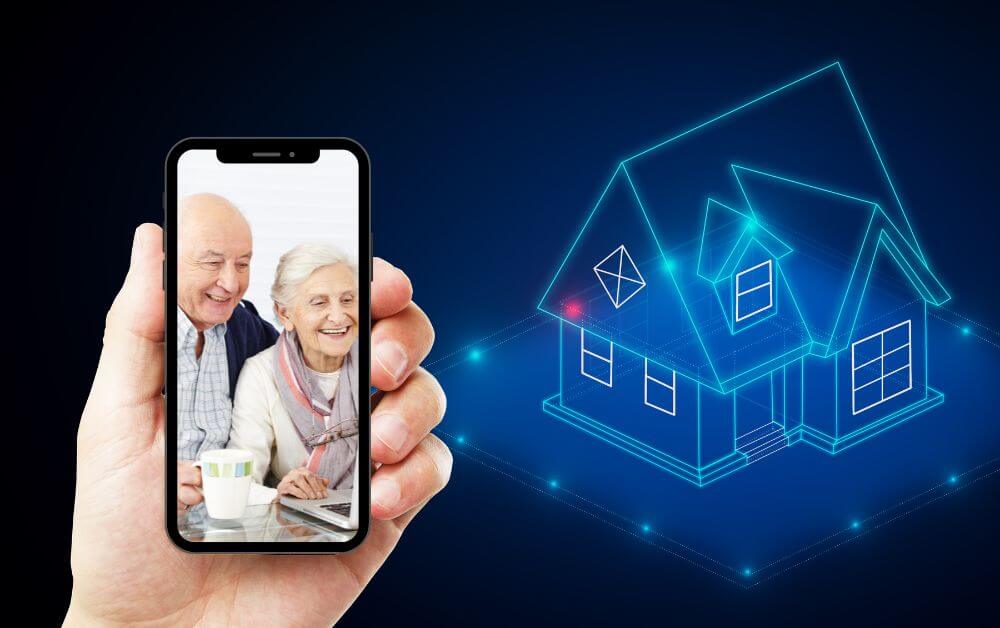Sometime very soon, we need to change our view of what “old age” looks like, and especially change what type of facilities we think older people will be happy living in. The simple version is that we need tech-enabled smart homes for seniors. Watch the video for some examples.
Throw Forward Thursday with Graeme Codrington. Welcome to tomorrow’s world, today.
TRANSCRIPT
Come with me to your future home. Not an old age home or a retirement centre, but a smart home designed for elderly people.
My name is Graeme Codrington, this is Throw forward Thursday and we’re jumping into the Future, where we try and imagine how we could apply the internet of things and artificial intelligence and predictive data analytics and robotic automation and yes, all of the buzzwords.
But if we can apply all of those to the type of building, the type of home that we would create for a senior citizen. Part of the problem that elderly people have is they don’t want to move into something that feels a little bit like hospice and hospital care. Many of them want to remain independent, and some of them are fiercely so, and we can do that with technology. A few things we’d want to have in that house.
One of the things that does happen as you get older is that your memory goes. And we would want a house that would remember to do a whole lot of the daily tasks. It would remember to water the plants, for example, and to feed the pets. That’s easy stuff. It would remember what medication you need, maybe even analyse what’s actually in your body on a real time basis, using a smartwatch or patches or smart devices, and then making sure that you get the medicine you need when you need it, that you don’t overdose or underdose. Again, that feels like it’s quite easy to do.
You’d want a home that responded to you living in it, maybe responding a little bit more to your regular routine, so the TV switching on at a certain time, meals being cooked and created at certain times. You’d want a home that was filled with emergency and safety devices so that you couldn’t leave the stove on, for example, and something could burn, that if you fell there would be some way in which we knew that would happen. It could be built into the house with floors that are sensitive to somebody falling, or it could just be the current technology already built into the likes of an Apple Watch that can know when you’ve fallen.
As I say all of these things, I’m battling to really push myself into the future. I say this is the house of the future, but every piece of technology I’ve talked about I think already exists or is easy for us to imagine existing. In other words, what I am suggesting is that right now we need to be thinking about building homes for a generation of people who are getting older but are living longer, and who have more money than they’ve had before. Yes, I’m talking about the baby boomer generation and the Gen X’s and the Gen Y’s will come after them. We need to be thinking differently about the types of facilities we build for older people and the types of technologies that we will want to incorporate into those homes so that we can create an environment in which older people can live better and healthier lives.
You can go a step further and even add in those nursing care robots. They already exist in Japan. Robots that have conversations with older people that are more robotic pets, that provide companionship and assistance but are not living creatures and therefore don’t need the type of care that maybe some elderly people can’t give them. Yes, we don’t want to create this automated hellscape that we just lock old people into and never see them again, but I think that we can imagine and build wonderful worlds for our older generations to live in using technology that we know already exists and more technology that will come with the future of Internet of things and robotic automation and so on.
Yes, the future that could already be here and business opportunities for those who are in the construction and tech sector to build spaces that I know will be in huge demand.
As always, thank you for joining me in the future and maybe the not-so-distant future today. Join me every week as we jump into the future.
I’ll see you next week and see where it takes us.
At TomorrowToday Global, we help clients around the world analyse major global trends, developing strategies and frameworks to help businesses anticipate and adapt to market disruption in an ever-changing world.
Subscribe to our team’s weekly newsletter filled with insights and practical resources to help you succeed in the future of work.
For all enquiries, please use this email: [email protected]
Graeme Codrington, is an internationally recognized futurist, specializing in the future of work. He helps organizations understand the forces that will shape our lives in the next ten years, and how we can respond in order to confidently stay ahead of change. Chat to us about booking Graeme to help you Re-Imagine and upgrade your thinking to identify the emerging opportunities in your industry.
For the past two decades, Graeme has worked with some of the world’s most recognized brands, travelling to over 80 countries in total, and speaking to around 100,000 people every year. He is the author of 5 best-selling books, and on faculty at 5 top global business schools.


